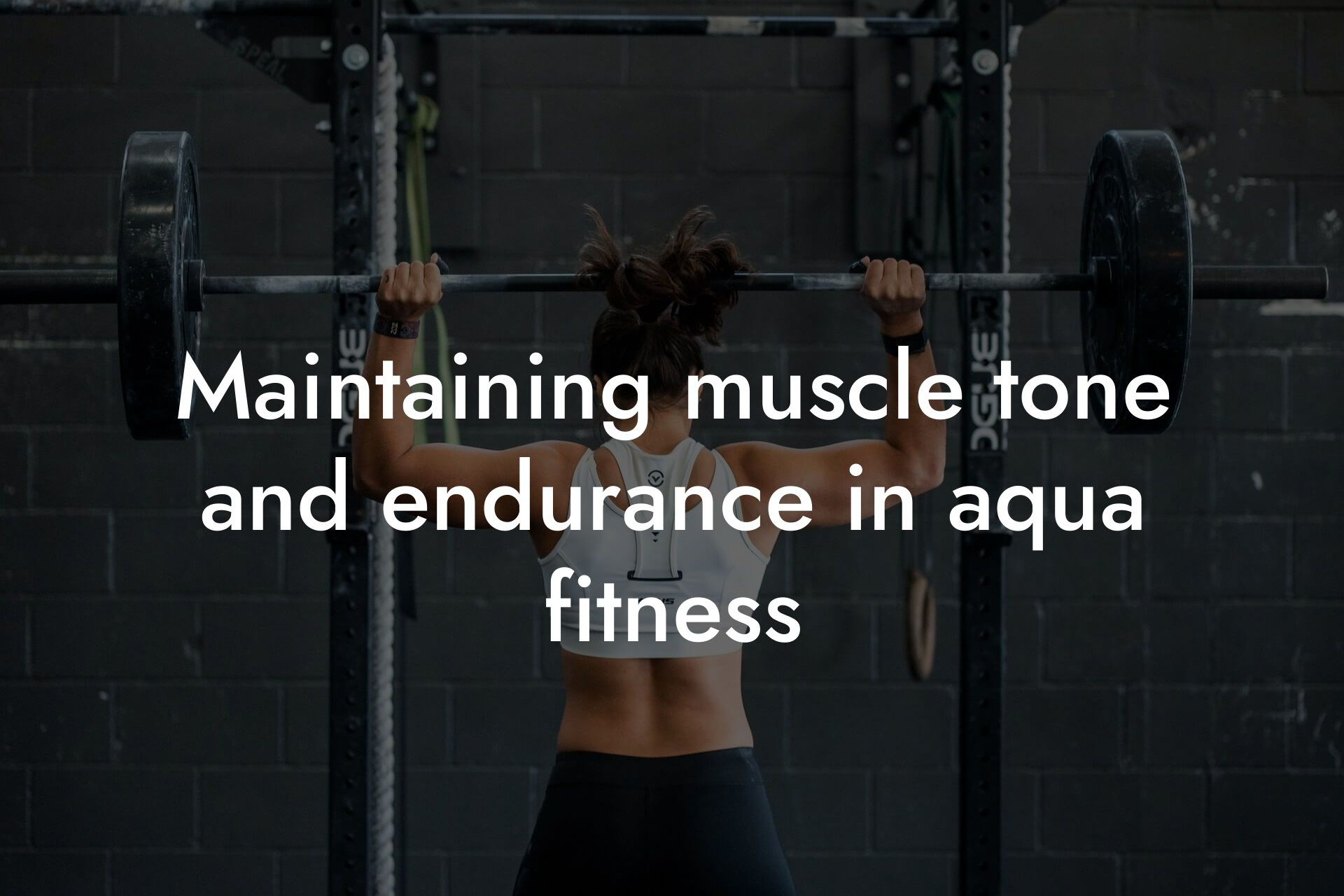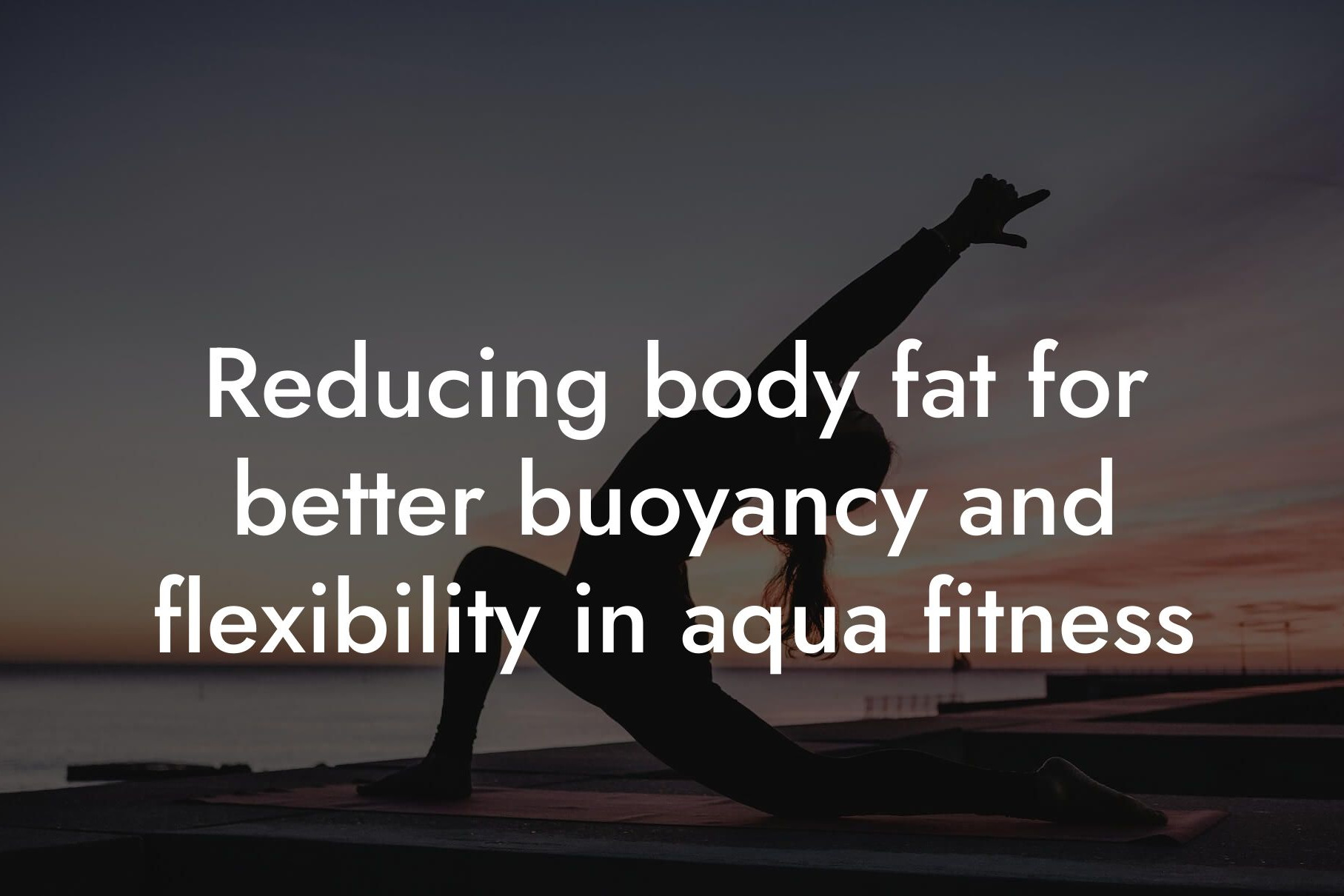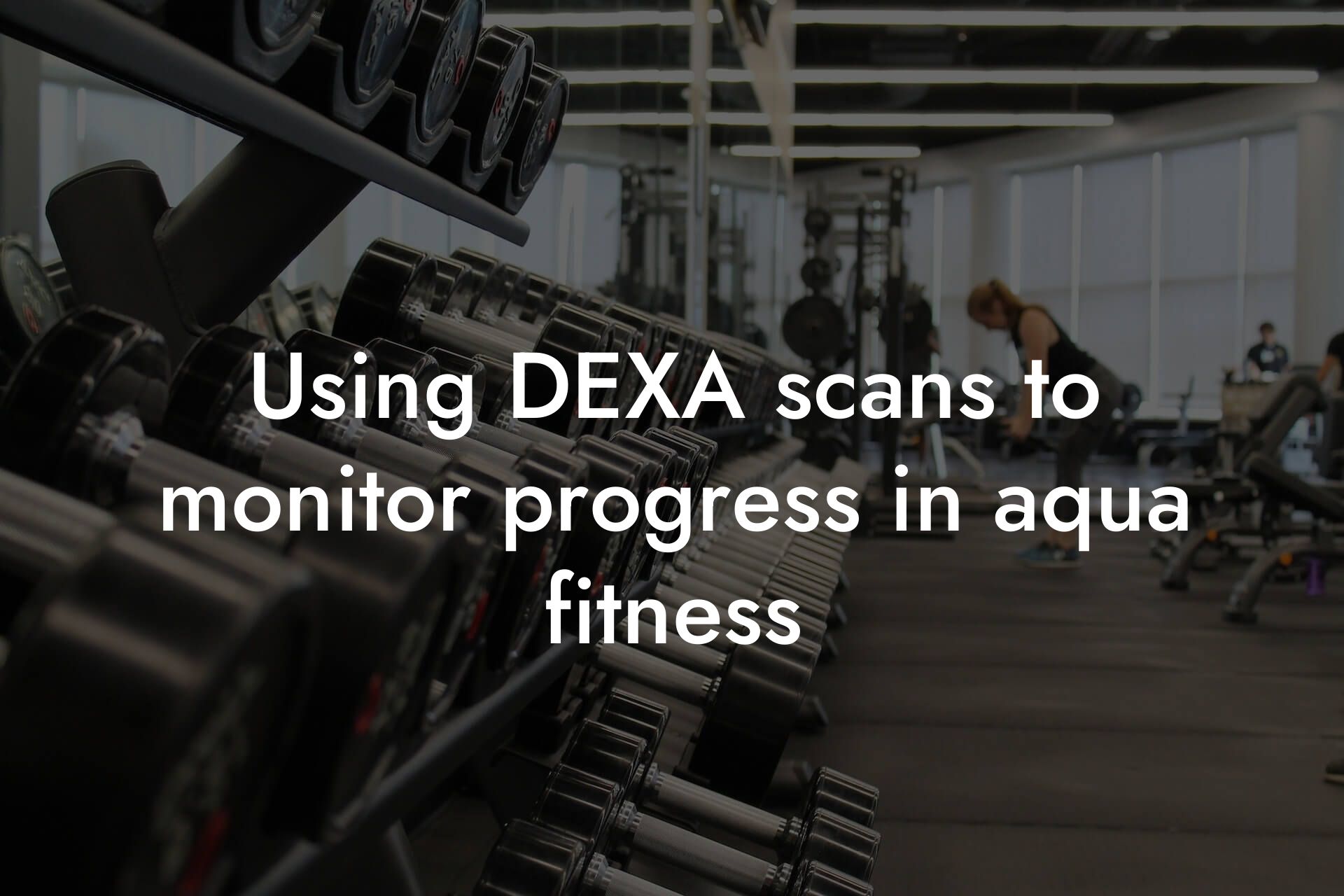Aqua fitness, also known as water-based exercise, has gained popularity in recent years as a low-impact, effective way to improve overall fitness and health. However, its benefits extend beyond general fitness, playing a crucial role in injury prevention and rehabilitation. As high-earning professionals, it's essential to prioritize your physical health to maintain peak performance in your career. In this article, we'll delve into the world of aqua fitness, exploring its role in preventing injuries and aiding in rehabilitation.
Table of Contents
- What is Aqua Fitness?
- The Benefits of Aqua Fitness for Injury Prevention
- Aqua Fitness for Rehabilitation: A Gentle and Effective Approach
- Common Injuries Treated with Aqua Fitness
- How to Incorporate Aqua Fitness into Your Routine
- At Tano Performance Group, We're Committed to Your Success
- Frequently Asked Questions
What is Aqua Fitness?
Aqua fitness refers to a range of exercises performed in water, typically in a swimming pool or aquatic therapy setting. These exercises can be adapted to suit various fitness levels, from gentle, low-impact movements to more intense, high-intensity interval training (HIIT). Aqua fitness can include activities such as water aerobics, aqua jogging, water yoga, and swimming laps.
The Benefits of Aqua Fitness for Injury Prevention
Aqua fitness offers several benefits that make it an ideal exercise option for injury prevention:
Buoyancy: Water provides a low-gravity environment, reducing the impact on joints and muscles. This makes aqua fitness an excellent choice for individuals with joint issues, chronic pain, or those who are overweight.
Resistance: Water provides gentle resistance, helping to build strength and endurance without putting excessive strain on the body.
Cardiovascular Fitness: Aqua fitness can improve cardiovascular health, increasing heart rate and blood flow without the high-impact stress associated with traditional cardio exercises.
Injury-Specific Prevention: Aqua fitness can be tailored to target specific areas prone to injury, such as the knees, hips, or shoulders. By strengthening the surrounding muscles and improving flexibility, individuals can reduce their risk of injury.
Aqua Fitness for Rehabilitation: A Gentle and Effective Approach
In the event of an injury, aqua fitness can play a vital role in the rehabilitation process. Water-based exercises offer a gentle, low-impact environment that allows individuals to:
Maintain Cardiovascular Fitness: Aqua fitness enables individuals to continue exercising while recovering from an injury, helping to maintain cardiovascular fitness and reduce the risk of deconditioning.
Improve Range of Motion: Water-based exercises can help improve flexibility and range of motion, reducing stiffness and promoting healing.
Strengthen Surrounding Muscles: Aqua fitness can target specific muscle groups, strengthening the surrounding muscles and promoting stability and support.
Reduce Pain and Inflammation: The buoyancy of water can reduce pain and inflammation, making it an ideal environment for rehabilitation.
Common Injuries Treated with Aqua Fitness
Aqua fitness is particularly effective in treating a range of injuries, including:
Knee Injuries: Aqua fitness can help strengthen the surrounding muscles, improve flexibility, and reduce pain and inflammation associated with knee injuries.
Shoulder Injuries: Water-based exercises can target the rotator cuff muscles, improving strength and flexibility, and reducing the risk of further injury.
Back Injuries: Aqua fitness can help improve core strength, reduce pain and inflammation, and promote flexibility and range of motion in individuals with back injuries.
Chronic Conditions: Aqua fitness can be adapted to accommodate individuals with chronic conditions such as arthritis, fibromyalgia, and osteoporosis, providing a low-impact, gentle exercise option.
How to Incorporate Aqua Fitness into Your Routine
Incorporating aqua fitness into your routine can be as simple as:
Finding a Local Pool: Look for local pools or aquatic therapy centers that offer aqua fitness classes or personal training sessions.
Working with a Trainer: Collaborate with a certified aqua fitness trainer to create a customized workout plan tailored to your fitness goals and injury prevention or rehabilitation needs.
Starting Slow: Begin with gentle, low-impact exercises and gradually increase intensity and duration as you become more comfortable.
Combining with Other Exercises: Incorporate aqua fitness into your existing workout routine, combining it with strength training, cardio, or flexibility exercises for a well-rounded fitness approach.
Aqua fitness offers a unique, low-impact environment that can play a vital role in injury prevention and rehabilitation. By incorporating aqua fitness into your routine, you can reduce your risk of injury, improve overall fitness, and maintain peak performance in your career. As high-earning professionals, it's essential to prioritize your physical health, and aqua fitness provides an ideal solution for those looking for a gentle, effective, and enjoyable exercise option.
At Tano Performance Group, We're Committed to Your Success
At Tano Performance Group, we understand the importance of maintaining peak physical performance to excel in your career. Our state-of-the-art DEXA machine provides a comprehensive body assessment, giving you the information you need to take your fitness to the next level. Combine our expertise with the benefits of aqua fitness, and you'll be well on your way to achieving your fitness goals and maintaining a healthy, injury-free body.
Frequently Asked Questions
What is aqua fitness and how does it relate to injury prevention and rehabilitation?
Aqua fitness, also known as water-based exercise or aquatic therapy, is a form of exercise that takes place in water. It is a low-impact, gentle-on-the-joints approach to fitness that can be modified to suit individuals with varying levels of mobility and fitness. In the context of injury prevention and rehabilitation, aqua fitness plays a crucial role in helping individuals recover from injuries, manage chronic conditions, and prevent future injuries.
How does aqua fitness help with injury prevention?
Aqua fitness helps with injury prevention by strengthening the muscles, improving flexibility, and enhancing proprioception (awareness of body position and movement). Additionally, the buoyancy of water reduces the impact on joints, making it an ideal environment for exercises that might be high-impact on land. This reduces the risk of overuse injuries and allows individuals to continue exercising while minimizing the risk of further injury.
What types of injuries can aqua fitness help with?
Aqua fitness can help with a wide range of injuries, including but not limited to: sprains, strains, fractures, tendonitis, bursitis, and post-operative rehabilitation. It is particularly beneficial for individuals with joint-related injuries or conditions, such as osteoarthritis, rheumatoid arthritis, and hip or knee replacements.
How does aqua fitness aid in rehabilitation?
Aqua fitness aids in rehabilitation by providing a controlled, low-impact environment that allows individuals to gradually progress from passive to active exercises. The buoyancy of water reduces pain and discomfort, enabling individuals to move freely and perform exercises that might be challenging on land. This helps to improve range of motion, strength, and function, ultimately promoting a faster and more effective recovery.
What are the benefits of aqua fitness for athletes?
Aqua fitness offers numerous benefits for athletes, including improved cardiovascular fitness, increased strength and power, enhanced flexibility, and accelerated recovery. The low-impact nature of aqua fitness also reduces the risk of overuse injuries, allowing athletes to maintain their fitness levels while minimizing downtime.
Can aqua fitness help with chronic conditions such as arthritis?
Yes, aqua fitness can be highly beneficial for individuals with chronic conditions such as arthritis. The warm water and gentle exercises help to reduce pain and inflammation, improve joint mobility, and increase strength. Additionally, the social aspect of group aqua fitness classes can help to reduce feelings of isolation and improve overall mental health.
Do I need to know how to swim to participate in aqua fitness?
No, you do not need to know how to swim to participate in aqua fitness. Many aqua fitness classes take place in shallow water, and participants can stand with their feet on the bottom of the pool or use flotation devices for support. Additionally, many classes focus on exercises that do not require swimming, such as water walking, jogging, or strength training.
What should I wear to an aqua fitness class?
It's recommended to wear comfortable, quick-drying clothing such as swimsuits, rash guards, or board shorts. Avoid wearing anything with metal or sharp objects that could cause injury or damage to the pool. You may also want to consider wearing water shoes or aqua socks for added traction and comfort.
How often should I participate in aqua fitness to see benefits?
The frequency of aqua fitness participation depends on your individual goals and needs. For general fitness and wellness, 2-3 times per week is a good starting point. For injury rehabilitation or chronic condition management, you may need to participate more frequently, ideally 3-5 times per week. It's essential to listen to your body and adjust your frequency based on how you feel.
Can I do aqua fitness on my own or do I need to join a class?
You can do aqua fitness on your own, but joining a class can be highly beneficial. A qualified instructor can provide guidance, support, and modifications to suit your individual needs. Additionally, group classes offer a social aspect, which can help with motivation and accountability. However, if you prefer to exercise independently, many community centers and gyms offer aqua fitness classes or open pool time for individual use.
How long does a typical aqua fitness class last?
The length of an aqua fitness class can vary, but typically ranges from 30-60 minutes. Some classes may be shorter or longer, depending on the specific goals and focus of the class. Be sure to check with the instructor or facility beforehand to determine the class duration and intensity.
What are the benefits of aqua fitness for older adults?
Aqua fitness offers numerous benefits for older adults, including improved mobility, balance, and flexibility. The low-impact nature of aqua fitness reduces the risk of falls and injuries, while the social aspect of group classes helps to combat loneliness and isolation. Additionally, aqua fitness can help to improve cardiovascular health, reduce chronic pain, and enhance overall physical function.
Can aqua fitness help with weight loss?
Yes, aqua fitness can be an effective way to aid in weight loss. The combination of cardiovascular exercise, strength training, and flexibility exercises can help to increase caloric burn, build muscle, and improve overall metabolism. Additionally, the low-impact nature of aqua fitness makes it an ideal option for individuals who may be struggling with joint pain or mobility issues.
How does aqua fitness compare to land-based exercise?
Aqua fitness offers several advantages over land-based exercise, including reduced impact on joints, improved flexibility, and enhanced cardiovascular benefits. The buoyancy of water also provides an added challenge to exercises, engaging core muscles and improving overall strength. However, land-based exercise can be more effective for building bone density and improving balance and coordination.
Can I do aqua fitness during pregnancy?
Yes, aqua fitness can be a safe and beneficial form of exercise during pregnancy. The low-impact nature of aqua fitness reduces the risk of injury, while the buoyancy of water can help to alleviate back pain and improve circulation. However, it's essential to consult with your healthcare provider before starting any new exercise program during pregnancy.
How does aqua fitness affect bone density?
Aqua fitness can help to improve bone density, particularly in older adults. The weight-bearing exercises performed in water can stimulate bone growth and density, reducing the risk of osteoporosis and fractures. Additionally, the gentle, low-impact nature of aqua fitness makes it an ideal option for individuals with osteoporosis or other bone-related conditions.
Can aqua fitness help with stress relief and mental health?
Yes, aqua fitness can be an effective way to reduce stress and improve mental health. The relaxing, calming environment of the water can help to reduce anxiety and promote relaxation. Additionally, the social aspect of group classes can provide a sense of community and connection, further enhancing mental well-being.
How does aqua fitness compare to other forms of aquatic therapy?
Aqua fitness is a form of aquatic therapy that focuses on exercise and fitness, whereas other forms of aquatic therapy, such as aquatic physical therapy or hydrotherapy, may focus more on rehabilitation and treatment of specific conditions. While there is some overlap between these forms of aquatic therapy, aqua fitness is generally more focused on general fitness and wellness.
Can I use aqua fitness as a cross-training tool?
Yes, aqua fitness can be an excellent cross-training tool for athletes or individuals who engage in high-impact activities. The low-impact nature of aqua fitness reduces the risk of overuse injuries, while the cardiovascular and strength-training benefits can help to improve overall fitness and performance.
How does aqua fitness affect cardiovascular health?
Aqua fitness can help to improve cardiovascular health by increasing heart rate and blood flow, reducing blood pressure, and enhancing overall cardiovascular function. The aerobic nature of aqua fitness exercises can also help to improve lung function and increase endurance.
Can I do aqua fitness with a friend or family member?
Absolutely! Aqua fitness can be a fun and social activity to do with a friend or family member. Many community centers and gyms offer aqua fitness classes or open pool time for individuals to exercise together. Exercising with a buddy can help to increase motivation, accountability, and overall enjoyment.
How do I find an aqua fitness class or program in my area?
You can find an aqua fitness class or program in your area by searching online, checking with local community centers, gyms, or YMCAs, or asking your healthcare provider for recommendations. Many facilities offer aqua fitness classes or programs, so be sure to explore your options and find one that suits your needs and goals.
Here are some related articles you might love...
- Maintaining muscle tone and endurance in aqua fitness
- Reducing body fat for better buoyancy and flexibility in aqua fitness
- Using DEXA scans to monitor progress in aqua fitness
- Nutrition tips for sustained energy in aqua fitness classes
- Bone density and its role in aqua fitness performance
- How body composition impacts aqua fitness performance
- Balancing strength, flexibility, and cardiovascular health in aqua fitness
- Strength training tips to complement your aqua fitness routine
- Recovery techniques for aqua fitness practitioners
Zak Faulkner
Zak Faulkner is a leading authority in the realm of physical health and body composition analysis, with over 15 years of experience helping professionals optimise their fitness and well-being. As one the experts behind Tano Performance Group, Zak has dedicated his career to providing in-depth, science-backed insights that empower clients to elevate their physical performance and overall health.
With extensive knowledge of DEXA technology, Zak specializes in delivering comprehensive body assessments that offer precise data on body fat, muscle mass, bone density, and overall physique. His expertise enables individuals to make informed decisions and achieve their fitness goals with accuracy and confidence. Zak’s approach is rooted in a deep understanding of human physiology, combined with a passion for helping clients unlock their full potential through personalised strategies.
Over the years, Zak has earned a reputation for his commitment to excellence, precision, and client-focused service. His guidance is trusted by top professionals who demand the best when it comes to their health. Whether advising on fitness programs, nutritional strategies, or long-term wellness plans, Zak Faulkner’s insights are a valuable resource for anyone serious about taking their health and fitness to the next level.
At Tano Performance Group, Zak continues to lead our Content Team revolutionising how professionals approach their physical health, offering unparalleled expertise that drives real results.




